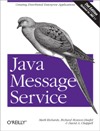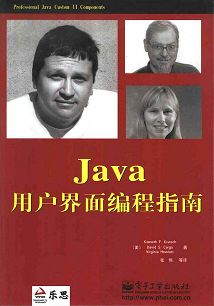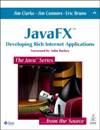作者:Mark Richards, Richard Monson-Haefel, David Chappell
出版日期:June 4, 2009
出版社:O'Reilly
页数:328
ISBN:ISBN-10: 0596522045 ISBN-13: 978-0596522049
文件格式:PDF
Review
The Java Message Service (JMS) provides a way for the components of adistributed application to talk asynchronously, or for welding togetherlegacy enterprise systems. Think of it as application-to-applicatione-mail. Unlike COM, JMS uses one or more JMS servers to handle themessages on a store-and-forward basis, so that the loss of one or morecomponents doesn’t bring the whole distributed application to a halt.
JMS consists of a set of messaging APIs that enable two types ofmessaging, publish-and-subscribe (one-to-many) and point-to-point(one-to-one). The highly lucid explanation of the ways in which thesework makes the technical content a lot more approachable. In practice,however, Java Message Service is still a book for Java programmers who have some business programming experience. You need the background.
After a simple JMS demonstration in which you create a chatapplication using both messaging types, the authors dissect JMS messagestructures, explore both types in detail, and then move on toreal-world considerations. These include reliability, security,deployment, and a rundown of various JMS server providers. Theappendices list and describe the JMS API, and provide message referencematerial.
Considering the complexity and reach of the subject matter, Java Message Servicedoes a great job of covering both theory and practice in a surprisinglyefficient manner. It’s easy to see why JMS has become so popular soquickly. Recommended. –Steve Patient, Amazon.co.uk –This text refers to the Paperback edition.
Product Description
Java Message Service, Second Edition, is a thorough introduction to thestandard API that supports “messaging” — the software-to-softwareexchange of crucial data among network computers. You’ll learn how JMScan help you solve many architectural challenges, such as integratingdissimilar systems and applications, increasing scalability,eliminating system bottlenecks, supporting concurrent processing, andpromoting flexibility and agility. Updated for JMS 1.1, this secondedition also explains how this vendor-agnostic specification will helpyou write messaging-based applications using IBM’s MQ, ProgressSoftware’s SonicMQ, ActiveMQ, and many other proprietary messagingservices. With Java Message Service, you will:
Build applications using point-to-point and publish-and-subscribemessaging models Use features such as transactions and durablesubscriptions to make an application reliable Implement messagingwithin Enterprise JavaBeans (EJB) using message-driven beans Use JMSwith RESTful applications and with the Spring application framework
Messaging is a powerful paradigm that makes it easier to uncoupledifferent parts of an enterprise application. Java Message Service,Second Edition, will quickly teach you how to use the key technologythat lies behind it.







 评论 (5)
评论 (5) 